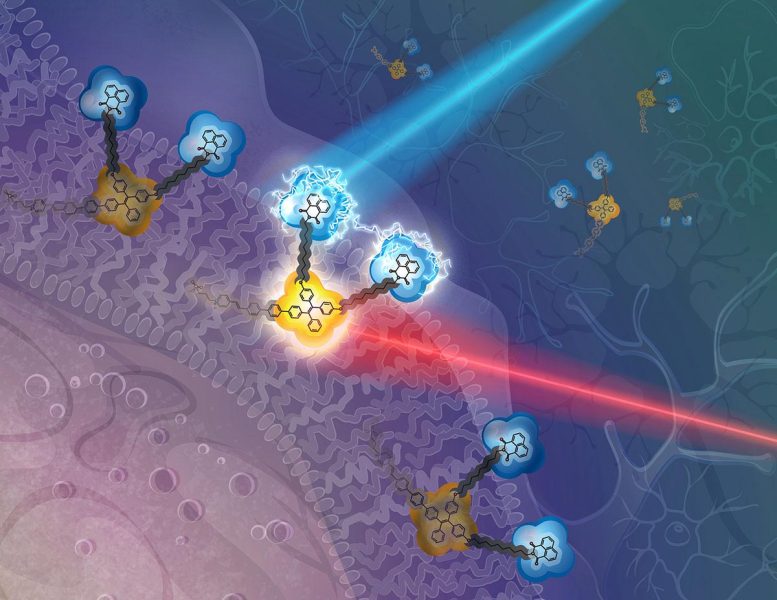
A conceptual drawing of the new molecular device. For experiments outside the human body (in vitro), the device would nest on the cell’s membrane: a “reporter” molecule would detect the local electric field when activated by red light; an attached “modifier” molecule would alter that electric field when activated by blue light. Credit: Katya Kadyshevskaya at USC
Using Only 100 Atoms, Electric Fields Can Be Detected and Changed
Founded in 1880, the University of Southern California is one of the world’s leading private research universities. It is located in the heart of Los Angeles.
“>USC Viterbi researchers create first nano-sized, molecular device potentially capable of sensing and altering the cell’s electric field, ushering in new possibilities for basic research.
Bioelectricity, the current that flows between our cells, is fundamental to our ability to think and talk and walk.
In addition, there is a growing body of evidence that recording and altering the bioelectric fields of cells and tissue plays a vital role in wound healing and even potentially fighting diseases like cancer and heart disease.
Now, for the first time, researchers at the USC Viterbi School of Engineering have created a molecular device that can do both: record and manipulate its surrounding bioelectric field.
The triangle-shaped device is made of two small, connected molecules — much smaller than a virus and similar to the diameter of a